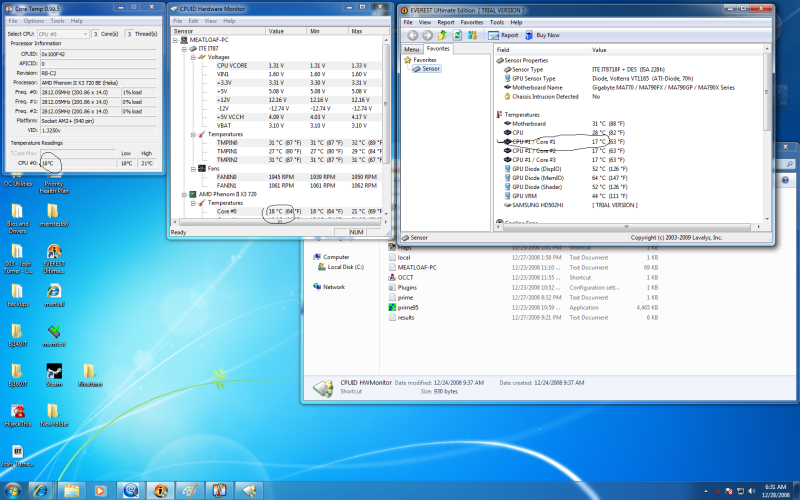I've been overclocking my system and following the temperatures from Core Temp, CPUID Hardware Monitor and OCCT when I stress test.
However, I installed EVEREST today and I'm running a Prime 95 blend and getting this
CPU#1 - 43
CPU#2 - 43
CPU#3 - 43
CPU - 54
Why would by CPU temp be higher than my core temps, isn't it usually the other way around? Which temp should I be following?
However, I installed EVEREST today and I'm running a Prime 95 blend and getting this
CPU#1 - 43
CPU#2 - 43
CPU#3 - 43
CPU - 54
Why would by CPU temp be higher than my core temps, isn't it usually the other way around? Which temp should I be following?
![[H]ard|Forum](/styles/hardforum/xenforo/logo_dark.png)


